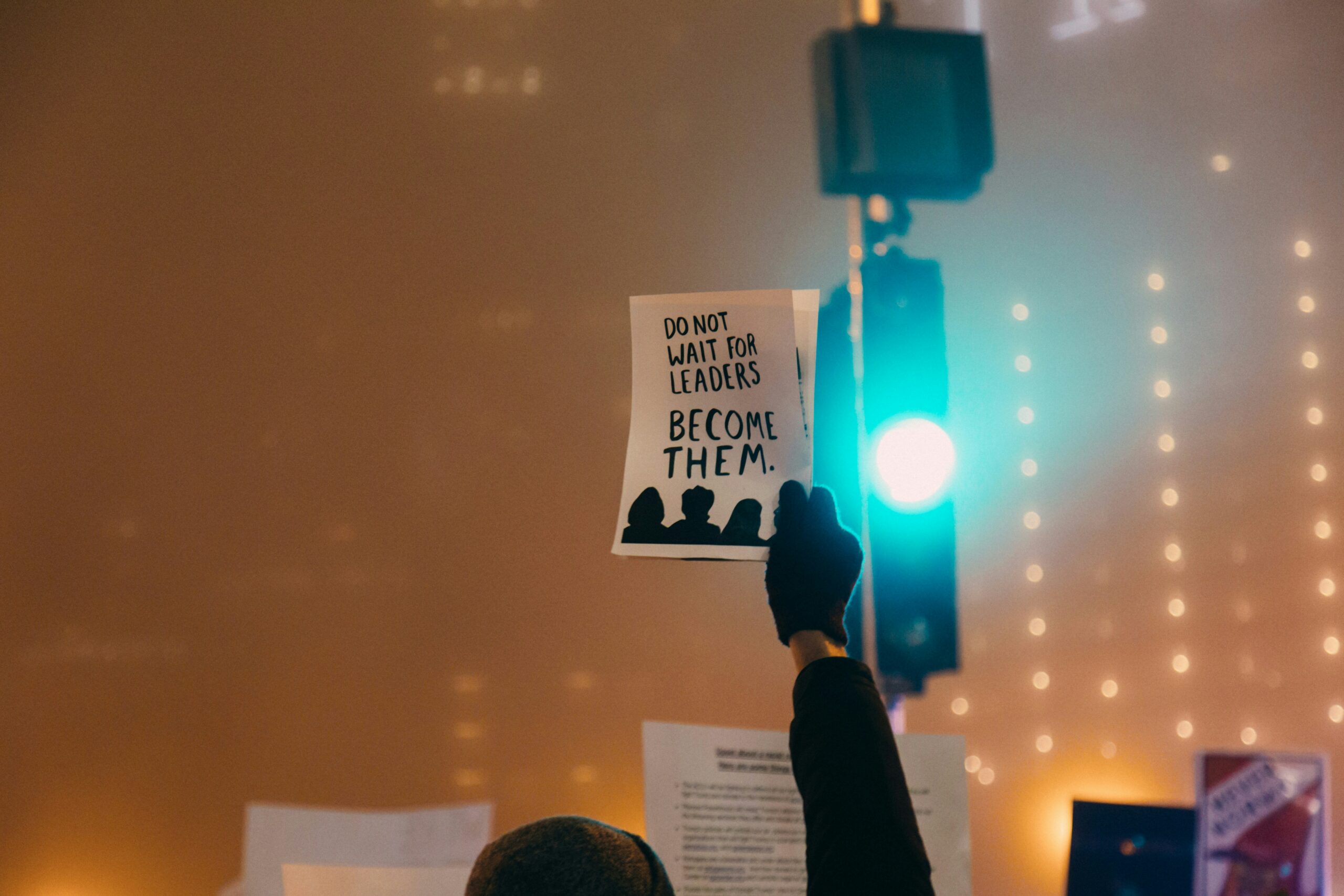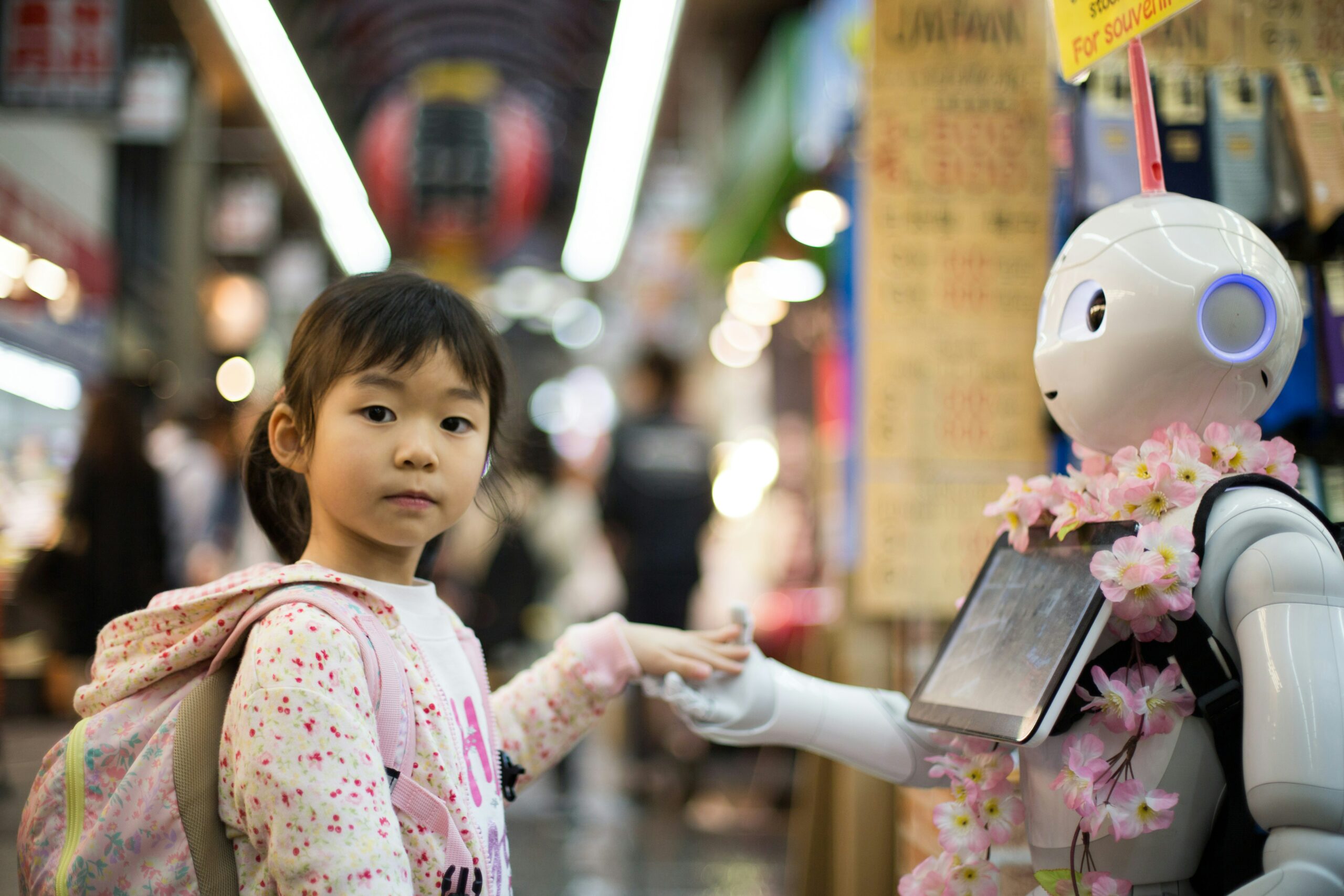Some brands won’t survive the rise of AI. Others will use it to form a much deeper relationship with consumers.
Advances in technology have already transformed multiple industries to the benefit of consumers. Data-led insights are making their experiences richer and more personalized. Yet when it comes to how consumers actually experience the world, Artificial Intelligence (AI) is still in its infancy. Today we can talk to our phones or smart devices around the home, but it’s often a frustrating experience, and the functionality is limited. Nonetheless, even in these early stages of the AI revolution, it’s clear that the way consumers engage with brands is going to change fundamentally. The question is, how?
Earlier this year, we hosted a week-long hack event in London to help business leaders understand how eight powerful forces are reshaping the consumer – including the way consumers will use technology, like AI, to live “smarter” lives. With a better understanding of the alternative futures that could evolve, leaders can better navigate the road ahead.
We worked in teams with technologists, innovators, future-thinkers and EY professionals to model a series of alternative “future worlds” that these forces might plausibly create, and to identify the implications and opportunities for business today. The process was part of our global FutureConsumer.Now program, which is helping business leaders think differently about the impact of future change.
In one of the worlds we modeled, consumers valued time much more than money. Their personalized AI learned about their unique preferences and used those insights to buy most of the things they needed. This allowed them to spend their time shopping only with brands that reflected their values and purpose. In another world, AI evolved beyond a tool of convenience to become an integral part of what it means to be human. People in this world used AI to become “better versions” of themselves every day. Without their AI, they could barely cope with daily life.
The final world had a more altruistic tone. The main focus of consumers was to “make a positive difference” by actively working for a higher purpose. This was defined as greater individual, societal and global well-being. As a consequence, attitudes toward consumption in this world changed fundamentally.
The rise of AI was an integral feature of all the worlds we modeled. In some scenarios, it offered savvy brands a way to form deep and profitable relationships with consumers. In others, those same consumers could use AI to screen out brands that did not reflect their needs, values or purpose. The opportunities and challenges for consumer-facing companies are fascinating.
Chapter 1: Time first
Consumers value time more than money. They use AI to meet most buying needs and shop only with brands that reflect their values and purpose.
Artificial intelligence and automation are already changing the way people live and work. At our London hack week we modeled a world in which – as a result – the relationship between time and money has changed. By that I mean, money is not the only currency that people can use to buy goods and services, and work is not the only means people have of generating wealth.
Consumers in our Time First world can capitalize on their own intrinsic value and earn tradeable social capital – a virtual currency – by engaging with brands. For example, a brand can reward them for helping with last-mile delivery or providing technical support to other customers. They can earn currency by acting as brand ambassadors, using their social influence to share positive brand experiences with their peers. Daily life is increasingly gamified through augmented reality and shopping experiences that deepen engagement by combining selling with activities or events. Consumers are rewarded for doing “good deeds” in society, such as community services or acts of charity.
In this world, consumers understand the value of the personal data captured and recorded by their AI assistants and negotiate with brands to realize this value. For example, by unlocking discounts, perks or free experiences. The social capital they build up is also tracked by governments and can be bartered for benefits such as better housing or easier access to public services.
This is a world in which people allow their AI systems to buy most of what they need, which gives them more time to shop with the handful of brands that reflect their values and purpose and help them attain the lifestyles they want. Instead of simply buying a new pair of football cleats, a future consumer could test their performance in a virtual match through the eyes of their favorite player, while getting assurance that the supply chain is free of child labor and carbon neutral. The cleats themselves could become a by-product of the brand experience.
This is a profitable world for brands that can build ecosystems with alliance partners and technology platforms so that everything “just works” for their target consumers. Branding evolves from supplying goods to delivering experience-based services. To thrive, brands need to develop ecosystems and end-to-end services that differentiate them with the consumer.
The emergence of this world would represent a deep paradigm shift. Today, many of the choices consumers make involve complexity and stress. Last-mile fulfilment is fragmented and delivery costs are unsustainable. While there are competing platforms, power is concentrated among a handful of technology companies. But in our Time First world, choice is curated and shopping is purely about leisure, with buying delegated to AI. Consumers increasingly deal with brands direct and are happy to share their data with them because they share in the value created by their data. Brands work with consumers as ambassadors to influence others. Regulatory intervention has shifted power from dominant platforms to multiple ecosystem alliances.
For this world to emerge, we’d need a light touch to the regulation of AI systems and brands that are willing and able to create alliances. Otherwise, a handful of platforms will dominate. Consumers would also need to be confident that their data is secure enough for them to engage in new forms of sharing.
Questions for leaders:
- How can brands break into the AI algorithms that might exclude them from the buying process?
- Where will the real value of the consumer lie? In the money they spend, the data they provide or the influence that they wield?
- How will the competitors of today become the collaborators of tomorrow?
Chapter 2: Better self
Consumers become “better versions” of themselves every day because AI is an integral part of what it means to be human.
AI is an important feature of all the worlds we modeled. But in the one we called “Better Self,” AI is an integral part of what it means to be human. This is a world in which AI is like a confidante, helping consumers to become “better versions” of themselves every day by taking care of the mundane aspects of life and guiding optimal decision-making.
People rely on their AI to keep nudging them in ways that help them to optimize themselves, by warning them of the consequences of all their actions – from eating junk food through to taking out a short-term loan. For a lot of people in this world, AI is so integrated into their daily lives that they cannot function without it.
This has a transforming effect on consumption. AI monitors the consumer’s physical, mental and financial health and well-being and gives advice and feedback that helps them to understand the impact of every decision.
Consumers trust AI to curate a choice of products, services and experiences that reduce complexity and make life more fulfilling. AI knows its “owner” so well that it suggests new and unexpected product ideas or experiences they love. It connects with the AI systems used by the people across a network of human connections, optimizing relationships with partners, parents, children, caretakers, friends, colleagues or citizens.
Some aspects of this world sound unappealing to me. But I imagine that people who’ve grown up using AI – the future consumers of tomorrow – will be happy to delegate many decisions to an unseen intelligence that works on their behalf. They wouldn’t worry so much about data security and privacy. Even so, there would still need to be a convergence of regulatory frameworks between countries on data sharing, and an integration of competing technology operating systems. Given the potential vested interests involved, this would be a challenge, to say the least.
The key shift in this world is that consumers would spend less time bogged down in complex choices, mundane purchases and basic tasks like paying bills or managing their schedules. Instead, they spend more time being their “true selves.” The impact on marketing would be fascinating. AI would learn about buying from the behavior of its human owner; emotional branding and appealing packaging would become irrelevant. The ability to model the AI decision-making process would force brands to develop and market-test new ideas much quicker than they ever could today.
Questions for leaders:
- In a world of competing ecosystems, how can the creation of a truly neutral and independent AI assistant be realized?
- Will consumers or their AI advisers be responsible for the impact of AI-led decision-making?
- How will social cohesion exist in a world of purposeful individualism?
Chapter 3: Planet first
Consumers prioritize their desire to “make a difference” by actively working for a higher purpose: greater individual, societal and global well-being.
This world we called “Planet First” is one in which consumers prioritize their desire to “make a difference” by actively working for a higher purpose. They still use emerging technologies to optimize their decision-making, and to improve their lives, like in the other worlds we modeled, but they also want to improve societal and global well-being. In the hack, we focused on the impact this would have on the food industry.
Planet First is a world in which consumers don’t just want to eat food that tastes good and meets all their nutritional needs, they want it to come from an interconnected food system that is sustainable on both a local and global scale. Hence the scale of waste and resource inefficiency we see in today’s food industry is not acceptable. Supply chains are much shorter with precision and urban farming becoming the norm. AI gives consumers full visibility about where their food comes from and how it is produced.
People use their personal health data to balance the nutritional value of the food they consume and its effect on both their well-being and the environment. One consequence is that people eat much healthier diets. Eating meat is less acceptable, because of the resources meat production requires. This is a world of rooftop allotments, “steaks” grown in laboratories, and meals tailored to your specific dietary needs.
A focus on food security and sustainable nutrition doesn’t reduce the desire of consumers to explore new tastes and food sources. What people eat depends on whether they were “rushing” or “caring.” With the former, they opt for food that fulfills a nutritional need within a busy lifestyle. With the latter, preparing and eating meals remains a valued social experience. Companies evolve brands to meet both needs: mass market staples and premium products that delivered new culinary experiences.
Will it happen? The food industry is the least disrupted sector on the planet. And while meat manufacturing is environmentally unsustainable, it’s at the core of food production. Attitudes may be hard to change.
Questions for leaders:
- Will social stigmatization mean that meat becomes the new tobacco, or are traditional consumption habits too deeply entrenched?
- What will be the impact of shortened supply chains and urban farming on rural or emerging market communities that are economically dependent on agriculture?
- How will brands balance the tradeoff between food that fills a nutritional need and meals that fulfill an experiential one?
Chapter 4: Implications for business
We explore how the future might look for both consumer products companies and retailers.
The worlds we modelled in London are all very different from each other. However the future unfolds, there are some underlying insights that will help business leaders to succeed now. First, five key implication for consumer products companies. Then five more for retailers.
Five implications for consumer products companies
- Brands can win from the rise of direct to consumer (D2C), if they invest in the right infrastructure. AI will become a significant bridge between brands and consumers. This is a huge opportunity for brands that can sell direct to consumers. To take advantage of it, they need to build infrastructure, especially fulfilment logistics and customer services.
- Companies will form unexpected alliances to master last-mile fulfillment. Future consumers will expect fulfillment to happen in a way that suits them, at no extra cost. Brands will have to work with logistics firms, retailers and other suppliers to aggregate the delivery of goods and services. Without these alliances – some of which could involve competitors working together or directly with “brand ambassadors” – it will be impossible to satisfy the consumers’ fulfillment expectations at a profit.
- Everyone can become a brand ambassador, and be rewarded for their influence. Smart companies will value future consumers not just by how much they spend, but by their ability to influence other people. Today, brand ambassador roles – and the benefits that come with them – are limited to celebrities and social media stars with obvious influence. In future, brands will be able to measure and engage the influence-power of every consumer. The ability to mobilize a mass of micro-influencers will be key to marketing success.
- Brands will have to choose how they play in a world where shopping and buying are different activities. Future consumers will trust their chosen AI platform to buy most of what need; they’ll only consciously “go shopping” for a select few products and services. Future consumers will expect whatever they purchase to meet their exact needs and expectations, even when their AI bot is doing the buying. Engaging a human shopper and meeting the purchase criteria of an AI bot will require very different business models. The former is about premium services and immersive brand experiences that reflect the values and purpose of the target consumer. The latter is about the strength of the algorithm, the best value proposition, efficient fulfillment and minimal marketing or packaging costs. One brand can’t thrive in both spaces.
- Subscription models will grow. Consumers will likely buy fewer goods “on demand.” Instead they’ll prefer subscription services. Products may become secondary to the services or experiences that frame them. To play in this space, companies will need to give the consumer end-to-end support for the lifespan of their relationship.
Five implications for retail
The future worlds we modeled in London would have a significant impact on today’s retailers. Below are five of the key ways that retailers could still create value without necessarily continuing in their core role of “selling things.” These opportunities depend on their ability to build on the strengths they have today: real estate, data, consumer trust and distribution networks.
- Physical stores will be a powerful asset, if they are used for more than shopping. With online and D2C selling growing, the value of retail space will be under even greater scrutiny. Retailers have a vast portfolio of well-located spaces that can be repurposed to serve a variety of needs. These could include modular working areas, immersive spaces where consumers can experience brands, and help centers to provide local support for goods and services.
- Convenience stores still have a future. Disintermediation will drastically reduce the need for people to visit shops, but this habit will not die out altogether. Some retail spaces will become more experience-led and there will still be demand for convenience retail, especially for fresh, local, simple and sustainable goods.
- Data insights will evolve into a tradeable currency. As analytics tools become increasingly sophisticated, the value of personalized consumer data will only grow. In the future, the ability to gather and sell data insights to other consumer-facing companies could be increasingly important for retailers. They have a much broader view of the consumer than most brands do, as they interact with them more often and across a broader range of product categories. They might even choose to sustain losses on some sales if these transactions deliver value to their data offering.
- Retailers could become micro-producers as manufacturing goes on-demand. More of the products that future consumers buy will be tailored to their specific needs and manufactured on-demand, via 3D printing. Retailers could repurpose store space to create print shops that make personalized goods on site for immediate consumption.
- Trust could become the strongest differentiator for retail. Retailers could hold on to their role as the bridge between consumers and brands by creating a trusted ecosystem or marketplace that competing brands can sell through. They could also use their logistics and store networks to offer last-mile fulfilment services acting as a hub to aggregate goods from different brands for final delivery to households.
The article was first published here.
Photo by Mike Petrucci on Unsplash.

 5.0
5.0 





















